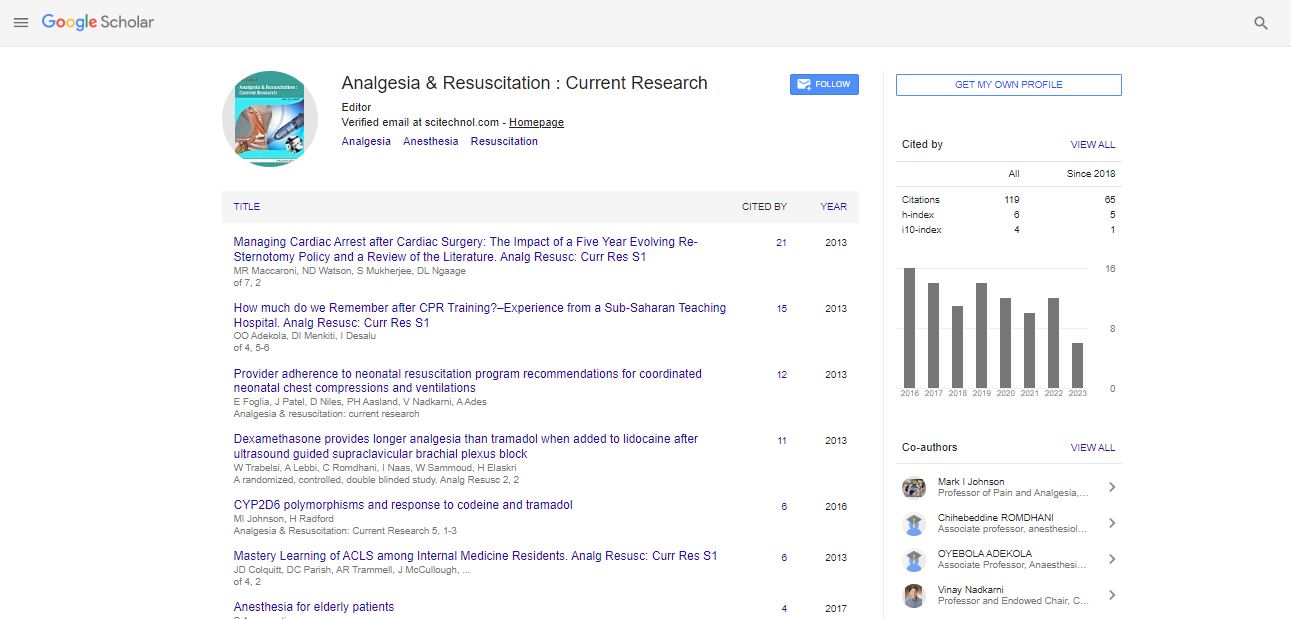Case Report, Analg Resusc Curr Res Vol: 3 Issue: 2
Postoperative Analgesia by Continuous Interscalene Block of 0.2% Ropivacaine: Comparison of the Two Different Infusion Rates
| Tomoki Nishiyama* | |
| Department of Anesthesiology, Shinagawa Shishokai Hospital, Japan | |
| Corresponding author : Tomoki Nishiyama Department of Anesthesiology, Shinagawa Shishokai Hospital, 3-2-6, Kishi-cho, Urawa-ku, Saitama-shi, Saitama, Japan Tel: 81-48-627-6762 E-mail: nishit-tky@umin.ac.jp |
|
| Received: October 14, 2013 Accepted: January 28, 2014 Published: February 20, 2014 | |
| Citation: Nishiyama T (2014) Postoperative Analgesia by Continuous Interscalene Block of 0.2% Ropivacaine: Comparison of the Two Different Infusion Rates. Analg Resusc: Curr Res 3:2. doi:10.4172/2324-903X.1000113 |
Abstract
Postoperative Analgesia by Continuous Interscalene Block of 0.2% Ropivacaine: Comparison of the Two Different Infusion Rates
Continuous interscalene block at a rate of 4-10 mL/h has been used for postoperative analgesia of upper extremities. However, with these infusion rates, sometimes local anesthetic leaks from the catheter insertion site. Therefore, lower infusion rate is preferable. The present study investigated whether a lower infusion rate (2 mL/h) of interscalene ropivacaine could be useful on postoperative analgesia of upper extremities.

